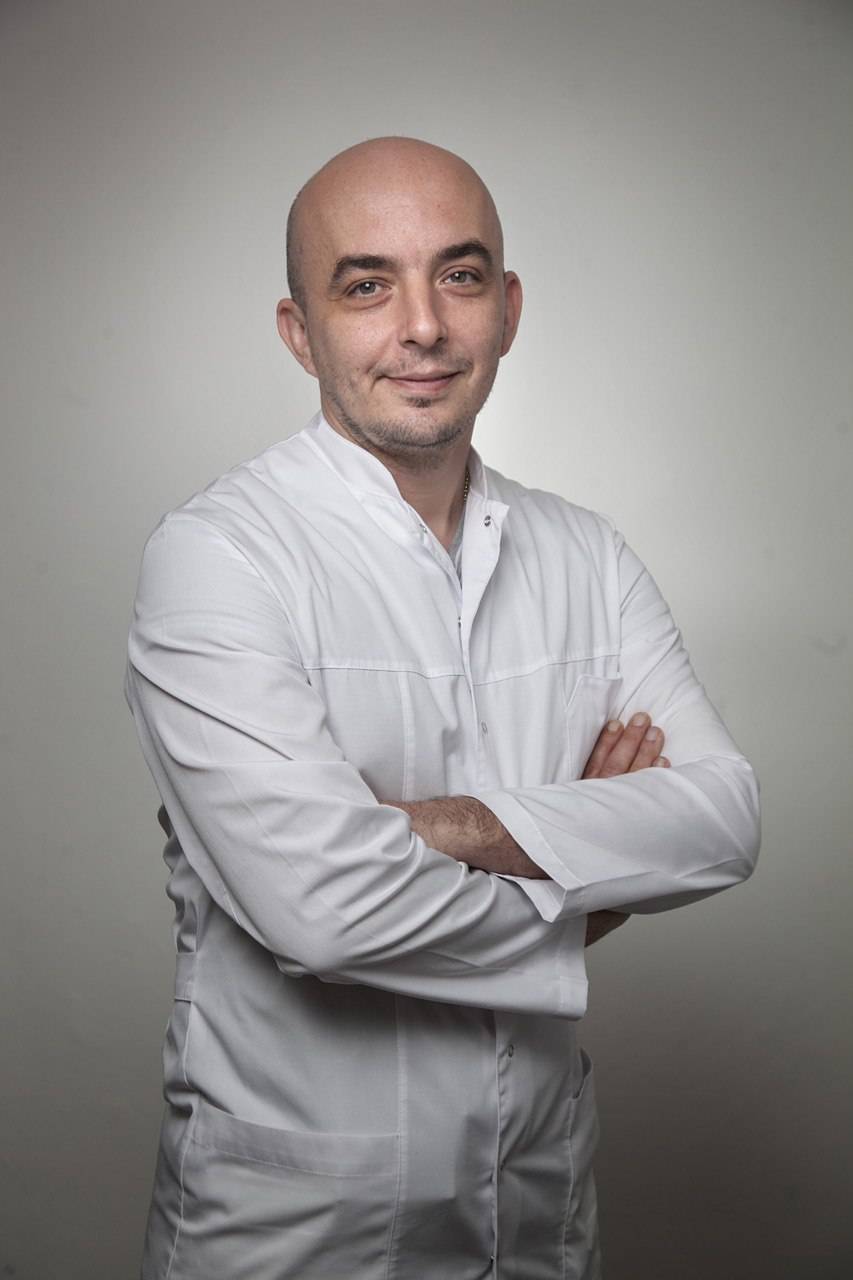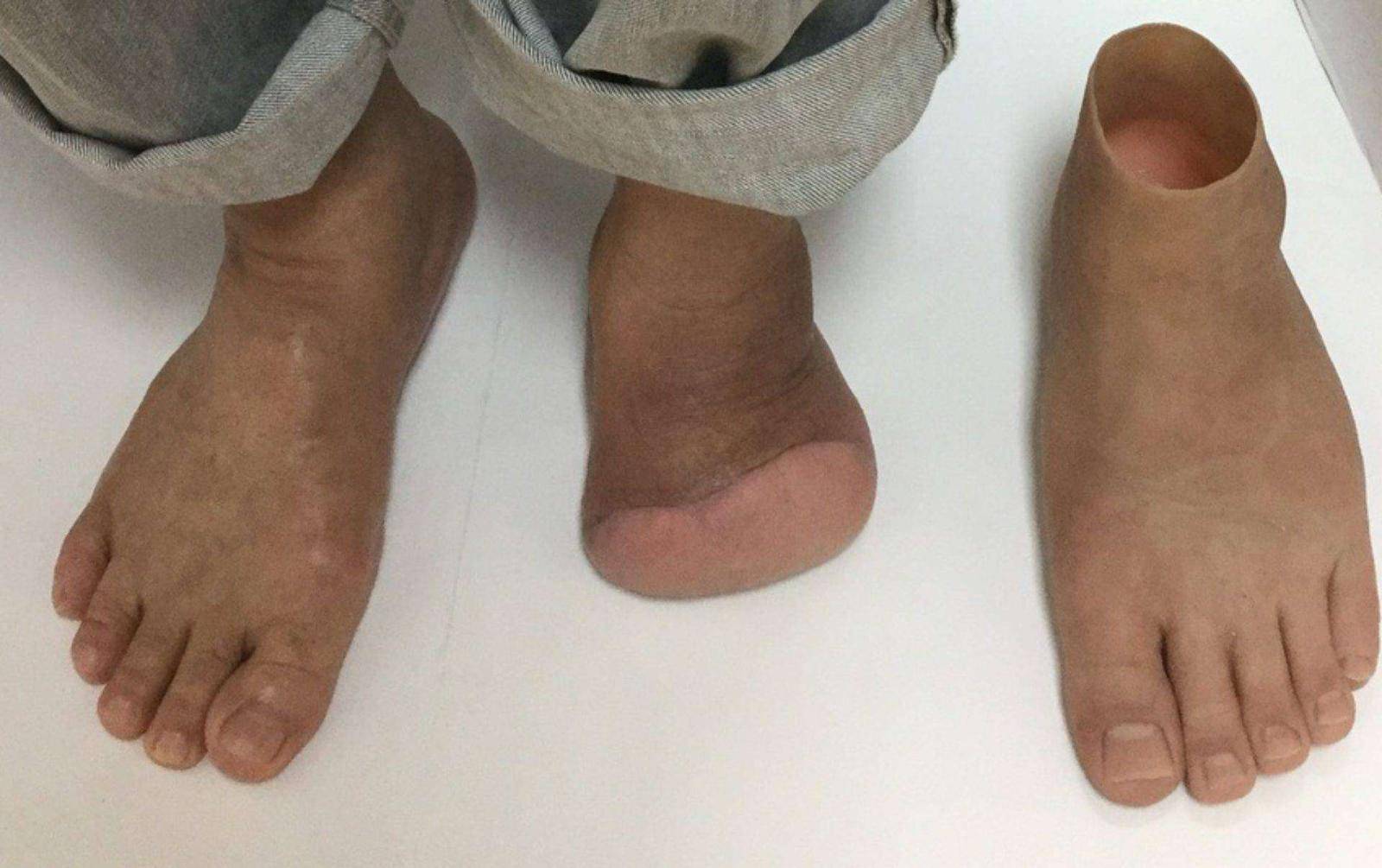Not only are there diseases that can be treated conservatively, but also certain neurological disorders of the hand that cannot be operated on at this stage of life.

Metatarsal amputation (transmetatarsal amputation)
This is a technically simple amputation that, as the name suggests, is performed through the metatarsal to preserve the parabola. It is a very functional amputation as the Achilles tendon, the anterior (TA) and posterior (TP) tibial tendons and the tendons of the femur, particularly the short fibula (PB), are preserved. This maintains active dorsiflexion and balance between flexors and extensors, reversers and ejectors. However, despite the potential biomechanical advantages over other distal levels, it has been observed that supracondylar amputations are unable to generate normal ankle flexor moments of force, requiring abnormal activation of the hip flexors, which pull the limb forward, to compensate for this deficit to balance. .
If the Achilles tendon is shortened, it must be lengthened to achieve good results and prevent further ulceration. The cure rate for metatarsal amputations ranges from 72 % to 43 % depending on the series.
We must first understand its primary function, which is: they are an essential support to be able to move around on two legs (two feet).
The legs perform several basic functions:
They absorb the entire weight of the body and ensure its balance.
They absorb the constant impact and absorb the energy generated by the forces generated when walking.
They adapt to a variety of surfaces, even the most uneven.
Acting like a rigid lever to generate the motive power needed to walk.
Transmission of the rotational forces generated by the hip.
Of course, this is associated with walking.
Proprioceptive information about the foot
Your muscles, tendons and joints have special sensors that react to movement or pressure. Thanks to these sensors, your brain knows how your feet are positioned in relation to the ground.
All of the structures that make up the foot, the muscles and tendons, work with the bones, ligaments and joints and are synchronized with the brain to enable the feet to perform these functions. If one of these elements is not working properly, all others are affected.

Lisfranc or tarsometatarsal amputation prostheses are based on a technology that combines orthopedic, artistic components with other elements that can be used to create a cosmetic and anatomical replacement that, in many cases, also improves the functionality of the entire foot. or on the missing page.
2014 #3
An analysis of the results of surgical treatment of metatarsal fractures and fracture dislocations is presented. Most metatarsal fractures are intra-articular, which can lead to severe lower limb dysfunction in the future. Thirty-four patients with metatarsal fractures and fracture displacements were treated. Analysis of long-term treatment outcomes showed that initial open repositioning and stable, low-trauma immobilization avoided unsatisfactory outcomes and achieved good long-term outcomes in most cases.
tags:
Summary:
An analysis of the outcomes of surgical treatment of metatarsal fractures and dislocations is presented. The majority of metatarsal fractures are intra-articular, which can subsequently lead to severe dysfunction of the lower limbs. Thirty-four patients with fractures and dislocations of the metatarsal bones were treated. The analysis of her postoperative course showed that above all the open reduction and the stable, trauma-friendly immobilisation avoided unsatisfactory treatment results and in most cases good long-term results.
Keywords:
In clinical practice, traumatologists often encounter difficulties when treating patients with metatarsal fractures. Most metatarsal fractures are intra-articular in nature. These fractures often disrupt the anatomical relationships of the Lisfranc and Chopar joints, resulting in severe abnormalities such as restricted pronation, supination, adduction and adduction of the foot, pain, limping, disability and sometimes disability [4, 7, 9].
According to the literature [8], navicular bone fractures account for 2.2-2.5 % of all foot fractures. Fractures of the navicular bone can occur in isolation or in combination with fractures of other bones in the foot. Fractures of the navicular bone affect the strength of the longitudinal arch of the foot, which must be taken into account when treating this pathology [1, 6].
Development of an individual rehabilitation plan
What does postoperative care include?
- bandages, removal of sutures;
- development of the big toe, increase in range of motion;
- Recommendations for wearing the Baruc shoe, learning to walk in this shoe;
- occlusion of the thumb and all operated parts, if necessary;
- Removal of spokes, clips;
- Choosing compression knits to reduce edema;
- compression therapy and manual lymphatic drainage to reduce edema;
- Personal sessions in the clinic with a physiotherapist, in case it is difficult to train independently at home under online supervision;
- assessment of metalloplasty and RG monitoring of the foot;
- learning to walk correctly by rolling;
- weekly monitoring of foot condition.
hindfoot
- Production of an orthosis to immobilize the ankle;
- Treatment of edema: selection of compression stockings, machine massage and training in self-massage;
- range of motion of the ankle, personal rehabilitation plan and individual training plan;
- Monitoring of the foot, prescription of RG controls.
The result of rehabilitation depends not only on the extent of the operation and range of motion, but also on the individual characteristics of the body. In medicine, there is an unspoken rule of surgery: 50 % is the surgeon's experience and talent, 49 % is post-operative rehabilitation, and 1 % is luck. Every operation, like every injury, has consequences. In 1 % of the cases, we do not know to what extent these will manifest and whether they will distress the patient. In the other 99 % it is the rehabilitation therapists. FootClinic do everything in their power to ensure that the rehabilitation has the maximum effect.
Insufficient rehabilitation after foot surgery can have unpleasant consequences. The most common are limping of the operated leg due to abnormal development of the joint and pain due to lack of range of motion (the less movement in the joint, the more severe the pain).
The main goal of rehabilitation is to restore sufficient range of motion in the joint so that the quality of life is not affected and the patient can lead a normal life without restrictions.
In all phases of rehabilitation after surgery, the interaction between the rehabilitator and the patient is important, but it must not be forgotten that the patient himself, his level of self-responsibility and his desire for a good outcome play a key role in this process.
Course speakers

Viktor Protsko, orthopedic-traumatologist, doctor of medical sciences, associate professor in the Department of Traumatology, Orthopedics and Arthrology at the Peoples' Friendship University of Russia, head of the Center for Foot and Ankle Surgery at the Aleksey Vitalyevich State Clinical Hospital.

Aleksey Vitalyevich Mazalov, head of FUTDOCTOR, orthopedic trauma surgeon, podiatrist. President of the Russian Association of Foot and Ankle Surgeons.

Time schedule
- Protsko VG (Moscow)
- AV Mazalov (Moscow)
- Ketov MS (Novokuznetsk)
- Gorokhov AV (Simferopol)
- Cherevtsov VN (Krasnodar)
- AV Kachesov (N. Novgorod)
- DS Yakushev (Moscow)
- Skrebzow WW
- Osnach SA
forefoot surgery.
Speech by the President of the Russian Association of Foot and Ankle Surgeons, who informed the participants about the principles of the organization of the event
AV Mazalov.
Biomechanics of the foot. Clinical and instrumental research methods. nosology. Nuances of clinical and podometric examination, pedobarography, individual foot insoles according to the Sursil Ortho method
Taj AA Anatomy of the Foot. Important aspects.
Cherevtsov VN Clinical examination of the surgeon - basic guidelines, surgical approaches.
Cherevtsov VN, Mazalov AV Implants and instruments in foot surgery. Basic principles of access and osteosynthesis.
Mazalov AV Demonstration of the technique of making custom insoles by the teacher
Taj AA, Protsko VG.
Overview of types of 1st metatarsal osteotomy.
Mazalov AV, Protsko VG Sliding osteotomy of the 1st metatarsal, indications, subtleties
Ketov MS, Protsko VG Nuances of techniques used in forefoot surgery
Protsko VG, Mazalov AV Demonstration of the lecturer's basic manipulations on a cadaver preparation.
– Radical cheilectomy, SCARF osteotomy, osteotomy of the proximal phalanx of the first toe, classic technique.
Protsko VG, Ketov MS
– Slide down osteotomy.
Ketov MS, Cherevtsov VN
– Modified dovetail technique on a plastic model.
Yakushev DS Manipulations performed by cadets in the cadaver laboratory under the supervision of teachers. mentors
Protsko VG, Mazalov AV, Ketov MS, Osnach SA, Kachesov AV, Cherevtsov VN
- Bone cross sections of the foot.
- The reamputation is.
- Life after a leg amputation.
- The toe formation.
- Indications for amputation.
- Why amputate legs for diabetes?.
- How to amputate a leg.
- fracture of the elbow in the foot.
